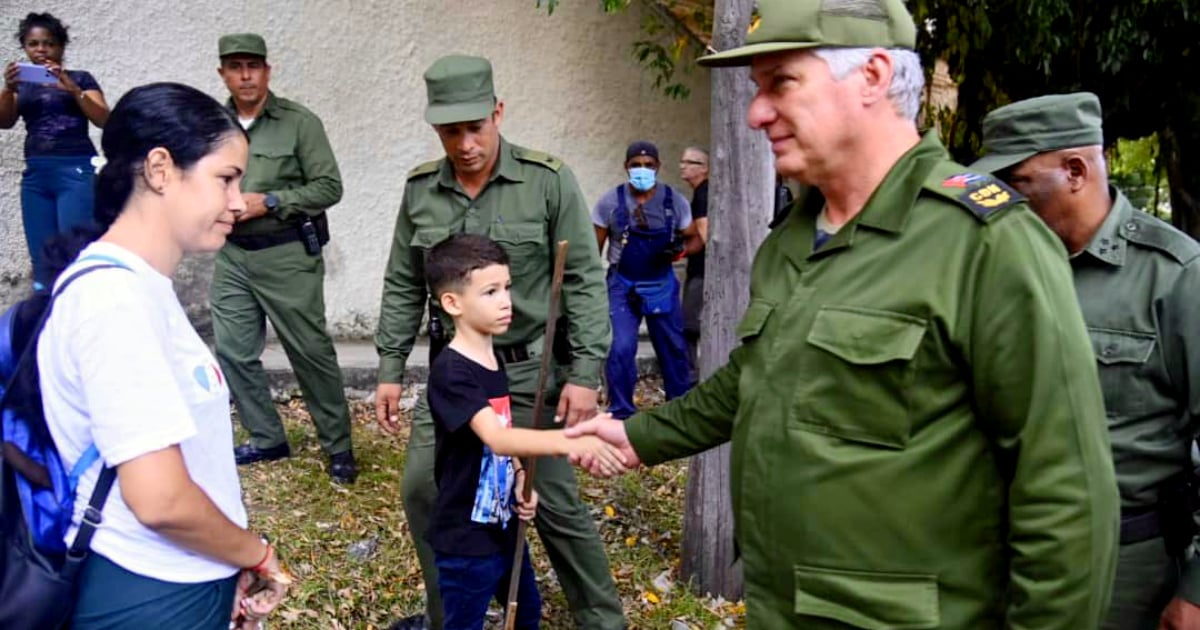Clad in his role as the head of the National Defense Council, Cuban leader Miguel Díaz-Canel once again took to the streets of Havana, pushing forward his ongoing campaign for a cleaner and more hygienic city. Despite numerous efforts, the capital remains plagued by filth and neglect, a situation Díaz-Canel aims to remedy by personally engaging with residents and showcasing his determination to tidy up Havana.
This past Saturday, coinciding with Havana's 505th anniversary, Díaz-Canel toured various areas of the city to express his concern over the widespread neglect, filth, and pollution. He visited the so-called "Cubo" at the former Caballería Wharf, a key point in the city's central sewage system. "Here, he learned about the investments being made to improve the drainage of liquid waste from five Havana municipalities, thanks to funds donated by Spanish institutions," the Presidency shared on social media.
Efforts to Restore Havana's Historical Landmarks
His itinerary also included a stop at the "old Palacio Sarrá," located on the Havana Malecón, which has been restored with the help of the Office of the Historian of Havana and funding from the Saudi Fund for Development. The building is considered a significant heritage site, alongside the former Palacio de las Cariátides, which once housed the Spanish Cultural Center from 1997 until 2003, when it was shuttered by Fidel Castro after substantial Spanish investment and restoration work.
Moving on, the self-styled leader of "continuity" and his entourage made their way to the areas surrounding the sports city in the Cerro municipality, where he was briefed on the recovery efforts. During discussions with local authorities, the leader reiterated his strategy for cleaning up Havana. "This is a very large and complex municipality, but it has many workplaces. If we can get workplaces to responsibly take on their part in maintaining the city's cleanliness, we win the battle," he stated.
The Struggle Against Havana's Waste Continues
The "battle" against trash remains a challenge for the architect of "creative resistance." Earlier in October, Díaz-Canel launched a comprehensive offensive against the uncontrolled buildup of garbage in the capital. According to the state-run newspaper Granma, during a visit to the Diez de Octubre municipality, he announced a strategic plan where "each ministry will sponsor a municipality" to stabilize waste collection and improve the city's hygiene conditions.
However, a month later, Havana still struggles with overflowing dumps, ruins, and debris littering its streets. Díaz-Canel's strategy, which relies on ministries sponsoring municipalities and "eradicating the culture of sloppiness," appears to be missing in action. Unperturbed, the first secretary of the Communist Party of Cuba (PCC) "dialogued with workers and residents" in Cerro, as reported by the National Television News (NTV), explaining the sanitation strategy developed during his sleepless nights, concerned for Cubans' health.
"So, what do we need to do? Seek sustainability. We can't always have the number of tools we have now. But if once a week we manage to have a group of tools and organizations participate, if workplaces support their communities, if we organize weekly initiatives like this with support from CDRs and workplaces, we help maintain the city," he urged. He also called for "discipline and commitment from the city's inhabitants" to keep Havana beautiful. "We must all defend this city together, healing its wounds," he added before returning to the Palace with clean hands, his entourage of applauders, and his polluting vehicles.
